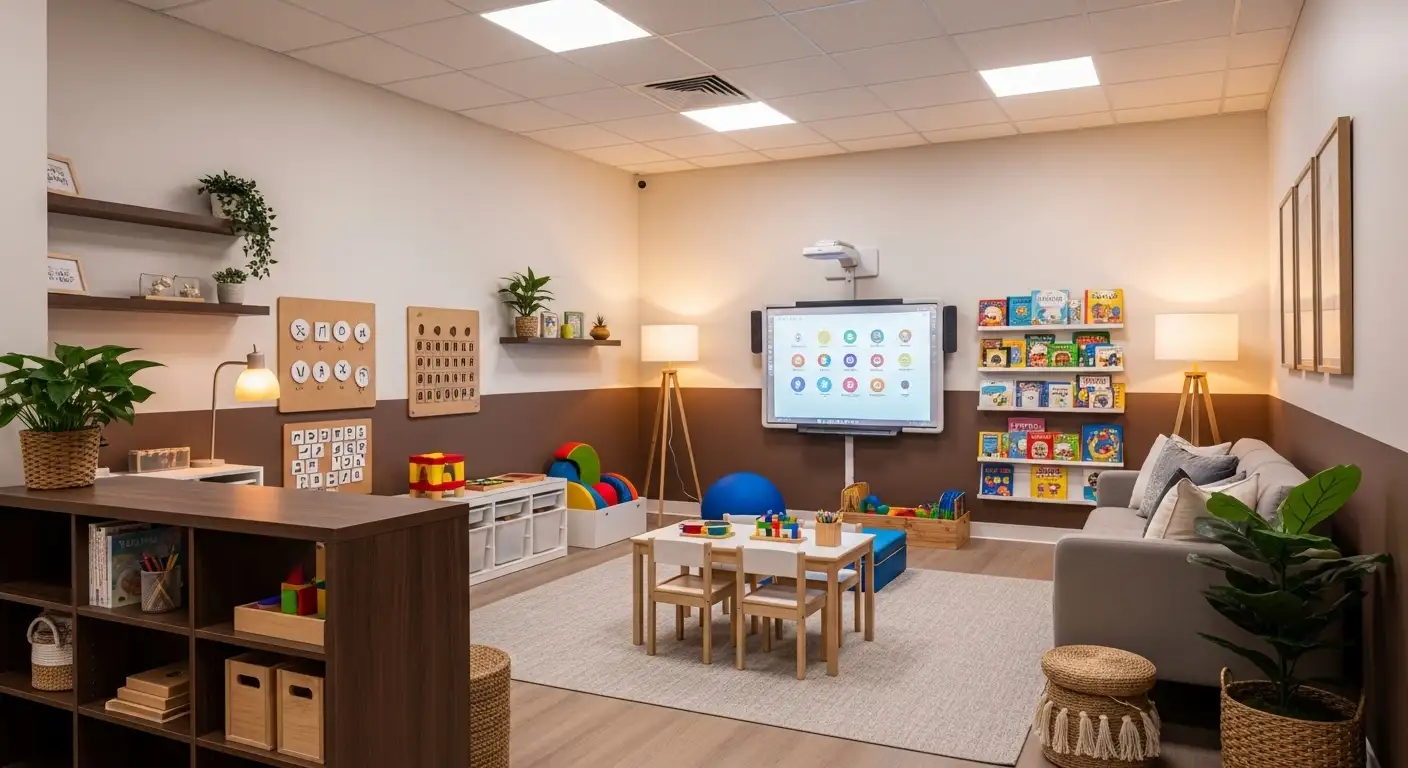How to Deal with Autism Behavior Problems


Understanding Behavioral Challenges and Implementing Effective Interventions
Children with autism often exhibit a range of behaviors that can be challenging for caregivers. These behaviors are influenced by biological, environmental, and social factors and serve various functions like communication or emotional regulation. Recognizing these behaviors and their underlying causes is essential for developing effective management strategies. This article explores evidence-based approaches, practical techniques, and the importance of understanding each child's unique needs to promote positive development and reduce challenging behaviors.
Understanding Autism Behaviors and Their Causes

What are some common behavior problems associated with autism?
Children with autism often display a variety of challenging behaviors that can affect their daily lives and interactions. Common behaviors include repetitive actions known as stimming, such as rocking, hand-flapping, or spinning. These behaviors are usually harmless and help children self-regulate or manage sensory input.
In addition to stimming, meltdowns—sudden and intense episodes of emotional overwhelm—are prevalent. During meltdowns, children can lose control, exhibiting screaming, crying, or physical outbursts. Self-injurious behaviors like headbanging, hitting, or biting are also common, especially if the child is distressed or overwhelmed.
Aggression, including hitting, biting, or property destruction, can occur when children feel frustrated or unable to communicate effectively. Other issues include hyperactivity, anxiety, and difficulty with social interactions and communication.
Many of these behaviors serve specific functions, such as expressing discomfort, seeking sensory input, or avoiding difficult situations. Factors influencing these behaviors include sensory sensitivities, medical conditions like gastrointestinal issues, and difficulties processing internal sensations—known as interoception. Understanding and managing these behaviors often involve thorough assessment using methods like Functional Behavior Analysis (FBA), which helps identify triggers and purposes behind behaviors.
What understanding is available regarding the causes and assessments of autism behaviors?
The causes of autism are complex and involve a mix of genetic and environmental factors, although definitive causes are still being studied. Autism is considered a neurodevelopmental disorder characterized by differences in brain growth and connectivity, which influence how individuals process sensory information, communicate, and behave.
Behavioral assessment plays a vital role in understanding autism. Professionals use tools such as developmental history reviews, behavioral observations, and standardized screening instruments like the Modified Checklist for Autism in Toddlers (M-CHAT) and the Autism Diagnostic Observation Schedule (ADOS). These assessments help determine the presence and nature of autism and related behaviors.
Diagnosis typically relies on recognizing patterns like challenges in social communication, nonverbal cues, and repetitive behaviors, with confirmation from specialists trained in developmental disorders. Early screening during routine pediatric visits can lead to earlier detection, which is crucial for effective intervention. Assessment also involves identifying potential medical or sensory issues that may impact behavior.
Behavioral analysis extends beyond diagnosis. It involves understanding the function of specific behaviors—whether they are attempts to communicate, escape from stimuli, or seek sensory input—and developing targeted strategies to help children manage their behaviors more effectively.
The integration of multidisciplinary evaluations ensures a comprehensive understanding of each child's unique needs. This approach supports personalized intervention plans that promote better social, emotional, and functional outcomes throughout their lives.
Practical Techniques for Managing Behaviors

How can visual supports, social stories, and communication aids help in managing behavior issues?
Using visual supports such as picture schedules, social stories, and communication tools can significantly improve understanding and reduce anxiety for children with autism. Visual cues help children anticipate what will happen next, making transitions smoother and decreasing the likelihood of challenging behaviors. Social stories explain social expectations and routines in simple, clear language accompanied by images, which helps children grasp appropriate responses and behaviors. Communication aids like PECS (Picture Exchange Communication System) or speech-generating devices allow children to express their needs effectively, decreasing frustration that might lead to meltdowns or agitation. These tools provide a visual and tangible method for communication, especially for children with limited verbal skills, supporting their independence and fostering positive interactions.
How can positive reinforcement strategies like praise and rewards be implemented?
Positive reinforcement is one of the most effective strategies to encourage desirable behaviors in children with autism. Immediate praise, such as "Great job sharing!" or specific rewards like stickers or small treats, can motivate children to repeat these behaviors. Implementing a reward system, such as token boards or point charts, visually tracks progress and provides clear goals. When a child exhibits a positive behavior, reinforcing it with a reward that is meaningful to them increases the likelihood of its recurrence. Consistent use of praise and rewards helps establish routines and encourages compliance with instructions, making behavioral management proactive rather than reactive.
Why focus on what the child should do instead of what to avoid?
Shifting the focus from prohibitions to positive expectations helps children understand what is expected of them, reducing confusion and frustration. For example, instead of saying, "Don't run on the street," it’s more effective to say, "Walk on the sidewalk." This approach emphasizes the desired behavior, providing a clear and concise instruction. It also prevents children from fixating on negative commands, which can increase anxiety or opposition. Focusing on positive actions encourages cooperation and helps children develop self-regulation skills. It fosters a respectful environment where children learn appropriate responses through guidance rather than punishment.
How does maintaining routines and consistency reduce anxiety and prevent challenging behaviors?
Children with autism thrive on predictability. Maintaining consistent daily routines minimizes surprises that could trigger anxiety or behavioral outbursts. Visual schedules, sequence boards, and social stories prepare children for upcoming activities, especially changes in routine or environment. Planning routines involves setting regular times for meals, learning, play, and rest, which helps children feel secure. Consistency across caregivers, settings, and daily activities ensures that children understand expectations and feel safe. When routines are disrupted unexpectedly, caregivers can prepare children in advance, reducing the chance of distress. By establishing structured environments, caregivers can facilitate smoother transitions, decrease frustration, and foster positive behavior patterns.
How do these strategies work together to support children with autism?
Combining visual supports, positive reinforcement, clear behavioral expectations, and routines creates a comprehensive approach tailored to each child's needs. Visual tools facilitate understanding, while reinforcement strengthens desirable behaviors. Focusing on positive actions promotes learning and cooperation, and routine stability provides a sense of security. This integrated method not only manages challenging behaviors but also supports skill development, emotional regulation, and social interactions, ultimately enhancing the child's quality of life.
| Strategy | Description | Benefits |
|---|---|---|
| Visual supports, social stories | Use of images, stories, and communication aids to clarify routines | Reduces confusion, lowers anxiety, improves compliance |
| Positive reinforcement | Immediate praise or rewards for good behavior | Encourages repetition of desired behaviors |
| Focus on positive actions | Clear instructions on what to do, not what to avoid | Decreases frustration, promotes understanding |
| Consistent routines | Predictable schedule and environment | Lowers anxiety, facilitates transitions |
Understanding and applying these combined strategies help create a supportive environment that encourages positive behavior, reduces distress, and promotes development for children with autism. Remember, patience and consistency are vital in implementing these techniques effectively.
Supporting Communication, Anxiety, Sleep, and Social Skills

What challenges do children with autism face regarding communication, anxiety, sleep, and social skills, and how can these be addressed?
Children with autism often encounter difficulties in various areas such as communication, managing anxiety, maintaining healthy sleep patterns, and developing social skills. These challenges can significantly impact their daily life and relationships.
To support children struggling with communication, speech-language therapy is frequently used. This therapy helps improve language skills, understanding, and expressive abilities. Additionally, social skills training, which may include role-playing and social stories, helps children learn how to interact appropriately with peers and adults.
Managing anxiety in children with autism requires a combination of approaches. Psychotherapy options such as cognitive-behavioral therapy (CBT) have proven effective in helping children recognize and manage anxious thoughts and behaviors. Acceptance and Commitment Therapy (ACT) also helps children accept their feelings and develop coping strategies. When necessary, medication such as selective serotonin reuptake inhibitors (SSRIs) or beta-blockers may be prescribed to reduce physiological symptoms of anxiety.
Sleep disturbances are common among autistic children due to sensory sensitivities, anxiety, or routines. Establishing good sleep hygiene practices—like maintaining a consistent bedtime, creating a dark and quiet sleep environment, and limiting screen time before bed—can improve sleep quality. Relaxation techniques, such as deep breathing or listening to calming music, combined with predictable routines, help promote better sleep.
Addressing social skills challenges involves structured social skills training and social cognition programs that teach children how to interpret social cues and respond appropriately. Facilitating safe social opportunities and peer interactions fosters learning in natural settings. Support groups and community programs can also provide valuable social experiences.
Beyond therapy, fostering mindfulness practices and encouraging healthy lifestyle habits like regular physical activity and balanced nutrition contribute to reduced social anxiety and overall well-being. Tailoring interventions to the child's individual needs—integrating therapy, medication, and supportive strategies—is essential for enhancing daily functioning and quality of life.
By combining these evidence-based approaches, caregivers and professionals can better support children with autism in overcoming challenges related to communication, anxiety, sleep, and social skills, paving the way for more fulfilling interactions and improved mental health.
Evidence-Based and Developmentally Appropriate Interventions
What are the most effective and evidence-based approaches for autism behavior management?
When it comes to supporting children with autism, selecting proven and tailored strategies is vital. Among the most supported methods is Applied Behavior Analysis (ABA), a comprehensive approach that uses carefully structured techniques like discrete trial training (DTT) and pivotal response training. These methods focus on reinforcing positive behaviors and decreasing challenging ones through systematic interventions.
ABA aims to modify behavior by teaching new skills and reducing problematic actions, using reinforcement techniques that are both positive and immediate. For example, a child might earn a sticker or verbal praise when they complete a task or follow a social cue correctly.
Beyond ABA, other naturalistic and developmentally appropriate approaches offer complementary benefits. One such method is the Early Start Denver Model (ESDM), which emphasizes play-based, relationship-focused interventions. It encourages learning in natural environments, fostering social engagement and communication through fun activities.
The TEACCH program (Treatment and Education of Autistic and Communication-Handicapped Children) emphasizes visual supports and structured teaching environments to help children organize information and routines visually. These supports include social stories, visual schedules, and video modeling, which help children understand what to expect and how to behave.
Collaborating with educators and therapists ensures consistency across different settings. Creating a team that aligns strategies guarantees reinforcement is clear and predictable, which is essential for effective learning and behavior management. Regular data collection and assessment allow practitioners to tailor interventions, track progress, and make necessary adjustments.
Incorporating visual supports such as social stories and video modeling promotes understanding and social skills development. These tools support children’s comprehension, especially for those who think in pictures, allowing them to better navigate social interactions and routines.
Overall, combining evidence-supported behavioral techniques with individual-centered modifications creates a robust framework. Continuous professional guidance and involvement from families make these interventions more successful, helping children with autism thrive socially and behaviorally.
Managing Behavioral Triggers and Creating Supportive Environments

What signs indicate behavioral challenges in children with autism, and how can they be addressed?
Children with autism often display behaviors such as tantrums, aggression, self-injury, property destruction, withdrawal, and disruptive actions. These signs usually stem from difficulties in communication, sensory overload, changes in routine, fatigue, or health-related issues like pain or gastrointestinal problems.
Recognizing these behaviors early enables caregivers and professionals to respond effectively. To address them, interventions like Applied Behavior Analysis (ABA), which reinforces positive behaviors and teaches new skills, are commonly used. Naturalistic developmental approaches, such as the Early Start Denver Model (ESDM), help children develop social and communication skills in familiar settings.
Using visual supports like picture schedules, social stories, and cue cards can clarify expectations and routines. Consistent routines and positive reinforcement motivate children to follow desired behaviors and reduce frustration.
Functional Behavior Assessments (FBA) are valuable tools for understanding the specific causes behind challenging behaviors. They involve observing the child and analyzing the environmental, internal, and sensory factors contributing to behavior. This information guides personalized intervention plans, ensuring approach strategies are tailored to each child's needs.
By combining behavioral techniques, developmental support, and modifications to the environment, caregivers can effectively manage behavioral challenges. Recognizing behaviors as communication signals rather than misbehavior encourages a more compassionate and strategic response, enhancing the child's overall well-being and development.
How do stimulus overload, change, fatigue, and health issues act as triggers?
Sensory overload from loud noises, bright lights, or busy environments is a frequent trigger for distress. Sudden changes in routine or environment can cause anxiety or outbursts, especially if the child relies heavily on predictable patterns.
Fatigue and inadequate sleep can exacerbate irritability and reduce coping capacity. Health issues, such as pain from gastrointestinal concerns or illnesses, can also lead to behavioral problems, often as a form of communication.
Addressing these triggers involves proactive planning. Recognizing signs of overload, such as covering ears or becoming withdrawn, allows intervention before escalation.
Strategies to prevent triggers through planning routines and visual supports
Planning and structure are fundamental in reducing triggers. Establishing consistent daily routines provides predictability, helping children feel secure and knowing what to expect.
Implementing visual supports like schedules, timers, and social stories visually depict daily events, decreasing uncertainty about transitions and new activities.
Preparing children for upcoming changes through visual cues or discussions reduces anxiety.
Sensory-friendly spaces and scheduled sensory breaks
Creating quiet areas equipped with calming tools—like soft lighting, comfortable seating, or noise-canceling headphones—gives children a retreat to self-regulate.
Scheduled sensory breaks involving activities like rocking, spinning, or listening to music can help children manage sensory input before it leads to overwhelm.
Offering these regularly throughout the day prevents sensory overload and supports emotional regulation.
Collaborating with professionals and caregivers for a cohesive approach
A team approach—including caregivers, teachers, therapists, and healthcare providers—ensures consistency in intervention strategies.
Sharing observations, trigger recordings, and behavior diaries helps develop targeted plans.
Training caregivers and educators with behavior management techniques and understanding sensory needs fosters an environment where the child's needs are met holistically.
Regular reviews of intervention plans and open communication maintain progress and adapt strategies as the child develops.
Summary Table: Managing Triggers and Creating Supportive Environments
| Aspect | Strategies | Details |
|---|---|---|
| Identifying triggers | Observation, behavior diary | Monitor signs like ear covering, withdrawal |
| Preventing triggers | Routine planning, visual supports | Use schedules, prepare child for changes |
| Sensory management | Sensory-friendly spaces | Quiet rooms, calming tools, scheduled breaks |
| Support network | Collaborate with professionals | Share info, train caregivers, consistent strategies |
Understanding and managing environmental and internal triggers reduce the frequency and intensity of challenging behaviors in children with autism. Creating structured routines, sensory supports, and a collaborative approach provides a nurturing environment conducive to their development and emotional well-being.
Involving Families, Medical Considerations, and Long-term Planning
How can parents and caregivers help calm an autistic child during a meltdown or distress?
Helping an autistic child through a meltdown involves a calm, patient approach. Caregivers should stay as calm and quiet as possible, using slow movements and avoiding sudden or loud noises that may increase overwhelm. Creating a safe, quiet space filled with sensory tools such as soft toys, cushions, noise-canceling headphones, or weighted blankets can help the child regulate sensory input.
Offering comforting items like water or calming music can provide additional reassurance. Giving the child space to process their emotions without pushing for immediate calming is essential, as meltdowns are involuntary reactions to overwhelm or sensory overload.
It's important for caregivers not to punish or demand compliance during a meltdown. After the child has calmed, providing reassurance and a calming environment supports emotional recovery. Recognizing that meltdowns are signals of distress rather than willful misbehavior guides a compassionate response. This approach fosters trust and helps the child develop better emotional regulation over time.
Family involvement in creating routines and behavioral plans
Families play a vital role in managing autism-related behaviors by establishing consistent routines and clear expectations. Collaborating with therapists and educators, families can develop structured daily schedules using visual supports like social stories, sequence cards, and visual timetables. These tools help children understand what to expect, reducing anxiety and encouraging cooperation.
Creating a family-based behavioral plan involves setting rules that focus on positive actions. For example, instead of saying 'Don't run,' use 'Walk on the sidewalk.' Reinforcing good behavior with specific praise or small rewards encourages children to repeat those actions. Family members should be included in planning and implementing routines to ensure consistency.
Regular communication among caregivers, teachers, and therapists helps maintain cohesive strategies and adapt routines based on developmental progress and changing needs.
Addressing medical issues and sensory sensitivities
Many challenging behaviors in autistic children are influenced by medical conditions such as allergies, gastrointestinal issues, sleep disturbances, or pain. Regular health checks are essential to identify and treat these underlying causes.
Sensory sensitivities are common and can trigger disruptive behaviors. Creating sensory-friendly environments by reducing loud noises, bright lights, or strong smells can lessen distress. Offering sensory breaks—such as rocking, spinning, or listening to soothing music—enables children to self-regulate effectively.
Parents should maintain a food diary to address eating challenges and consult healthcare professionals if gastrointestinal or nutrition issues are suspected. Managing sleep problems with a routine sleep schedule, dark and quiet bedrooms, and consistent bedtime routines can improve sleep quality.
Routine health evaluations, including dental, ear, and throat examinations, help detect potential sources of discomfort that may contribute to behavioral issues. Treating medical concerns promptly reduces the likelihood of behavior escalation.
Regular health checks, sleep management, and addressing gastrointestinal issues
Ensuring early and ongoing health assessments with pediatricians and specialists is crucial for long-term wellbeing. Regular checks help monitor for medical conditions such as allergies, sleep disorders, or gastrointestinal problems that can exacerbate challenging behaviors.
Establishing good sleep hygiene is a cornerstone of managing behavior. Maintaining a consistent bedtime routine, limiting stimulating activities before sleep, and creating a calming environment promotes better rest.
Addressing feeding and bowel issues, including constipation or dietary intolerances, can decrease discomfort-related behaviors. Keeping a food and symptom diary may reveal patterns that inform dietary adjustments or medical intervention.
Long-term behavioral and support strategies, including community resources and therapies
Sustained support is vital for children with autism as they grow. Long-term strategies include continued behavioral therapy, speech, and occupational therapies, which support communication, daily living skills, and emotional regulation.
Community resources such as autism support groups, respite care, and social skills groups provide additional assistance and social opportunities. These programs reinforce what is learned at home and school, encouraging social development and independence.
Behavioral interventions like Applied Behavior Analysis (ABA) are effective over time in reducing disruptive behaviors and teaching functional skills. Medication may also be considered for managing irritability or aggression, under medical supervision.
Building a comprehensive support system that involves families, medical professionals, schools, and community organizations helps ensure holistic development and improved quality of life for children with autism.
Supporting Progress and Understanding Autism Behaviors
Managing behavior problems in children with autism requires a comprehensive, empathetic, and individualized approach. By understanding the functions of various behaviors, employing evidence-based strategies such as ABA, visual supports, and positive reinforcement, and collaborating closely with professionals, families can significantly improve their child's well-being. Creating predictable routines, reducing environmental triggers, and providing emotional and sensory support foster a safe and encouraging environment. Patience, consistency, and ongoing education are essential as caregivers navigate the complexities of autism-related behaviors, ultimately promoting growth, independence, and quality of life for children and their families.
References
- Tips that improved my autistic child's behavior | Autism Speaks
- How to help with your autistic child's behaviour - NHS
- Behavior challenges | Autism Speaks
- Behaviour - National Autistic Society
- Understanding Challenging Behaviors in Autism Spectrum Disorder
- Challenging behaviour: autistic children and teenagers
- Autism Behavior Problems - HelpGuide.org
- How to help your autistic child with day-to-day life - NHS
- Managing Difficult Behavior in Autism: All You Need to Know
Recent articles

Benefits of Art Therapy for Autism
Exploring Creative Pathways: How Art Therapy Enhances Lives of Children with Autism

Tips for Encouraging Speech Device Usage in Daily Life
Empowering Communication: Integrating Speech Devices Seamlessly at Home and Beyond

The Role of Speech Therapy in Treating Childhood Apraxia of Speech
Unlocking Speech Potential: How Therapy Transforms Childhood Apraxia of Speech

RBT Exam Study Guide
Essential Insights for Acing the Registered Behavior Technician Exam

Benefits of Drama Therapy for Autism
Unveiling the Transformative Power of Drama Therapy for Children with Autism

Supporting Autism in Mainstream Classrooms
Integrating Autism Support in Inclusive Educational Settings

